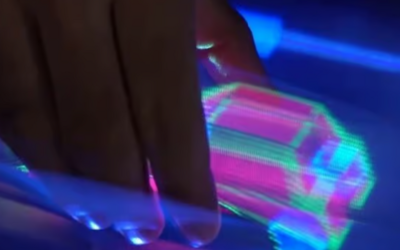‘Dire wolf’— world’s first successfully de-extincted animal:Scientists bring back ‘Game of Thrones’ wolf species after 12,500 years with gene-editing technology

What if the creatures we’ve only read about in textbooks or seen in fantasy shows were suddenly real again? What if you could hear a howl that vanished 12,500 years ago?
But it’s not a scene from fiction—this is real science.
For the first time in history, an animal that went extinct over 12,500 years ago has been brought back to life. What are dire wolves, and why are they famous Dire wolves (Aenocyon dirus) were Ice Age predators that once roamed North America. They were bigger, heavier, and stronger than modern gray wolves.
Think powerful jaws, wide skulls, and thick fur—built to survive the cold and take down massive prey. They’re also pop culture legends. The dire wolves featured in HBO’s Game of Thrones were inspired by this extinct species, turning them into mythical symbols of loyalty and strength. But until now, they only existed in fossil records and fantasy. Meet the company behind the miracle The brains behind the de-extinction breakthrough are ‘Colossal Biosciences,’ a Dallas-based biotech startup founded in 2021 by Ben Lamm and famed Harvard geneticist George Church.
Their initial mission was to restore the woolly mammoth. But since then, they’ve expanded to other species once thought lost forever. Colossal CEO Ben Lamm said: I could not be more proud of the team. This massive milestone is the first of many coming examples demonstrating that our end-to-end de-extinction technology stack works. And yes—it worked. In 2024 and 2025, three healthy dire wolf puppies were born. Two males named ‘Romulus’ and ‘Remus’ arrived in October 2024, and a female pup named ‘Khaleesi’ was born in January 2025. How a Texas lab brought an extinct species back It all started with two fossils, a 13,000-year-old tooth and a 72,000-year-old skull. Scientists at Colossal extracted ancient DNA and built full genomes of the dire wolf. Then, they compared these genomes with those of modern canids like gray wolves, foxes, and jackals to identify what made dire wolves unique. Using CRISPR, a powerful gene-editing tool, they made 20 changes in 14 genes in gray wolf cells to bring back dire wolf traits, such as white coats, thick fur, and powerful builds.
These edited cells were cloned, turned into embryos, and implanted into surrogate dogs—specifically, large mixed-breed hounds. Colossal further highlighted: Healthy developing embryos were then transferred into surrogates for interspecies gestation. What this means for science This isn’t just about bringing back an extinct species. It’s a giant leap for conservation science. Colossal says the same technology can help save endangered animals today by increasing genetic diversity and creating clones without invasive methods. They’ve already cloned two litters of red wolves—one of the world’s most endangered wolf species using a “non-invasive blood cloning technique.”
These new red wolf pups include a female named ‘Hope’, and three males: Blaze, Cinder, and Ash. Dr. Christopher Mason, a Colossal advisor: The same technologies that created the dire wolf can directly help save a variety of other endangered animals. This is an extraordinary leap in genetic engineering for science, conservation, and the preservation of life. The company also has de-extinction projects in the works for the Tasmanian tiger, the dodo, and the woolly mammoth. The wild is calling again Colossal even released a video of the dire wolf pups howling, captioned: “You’re hearing the first howl of a dire wolf in over 10,000 years. Meet Romulus and Remus—the world’s first de-extinct animals.”
This moment is more than just a scientific first. It’s a glimpse into a future where extinct species may no longer be lost forever.
The howl of the dire wolf may just be the beginning of an entirely new era where ancient creatures return, not from imagination, but from the lab.
Search
Recent
- IMD predicts ‘above normal’ rainfall in India this monsoon
- Blue Origin rocket carrying Katy Perry and all-female crew reaches edge of space, returns safely
- You can now feel and touch holograms like they’re real:In a world-first, Japanese engineers created a new 3D hologram that you can actually feel with your hands
- Robot boxing is no longer sci-fi:History’s first-ever humanoid robot boxing match set for next month – here’s everything you need to know
- OpenAI is saying goodbye to GPT-4:Microsoft-backed AI giant will remove its older model from ChatGPT on April 30; how it affects your experience





